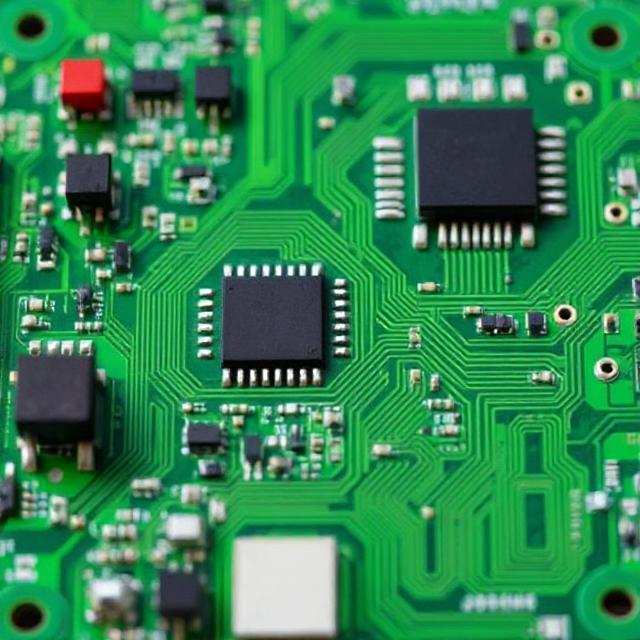What is a Thermocouple?
A thermocouple is a sensor used to measure temperature. It works by using two different types of metals joined together at one end. When the two metals are heated or cooled, they produce a small electrical voltage. This voltage is related to the temperature difference between the two ends, and by measuring this voltage, we can figure out the temperature.
In simpler terms, a thermocouple is like a special electrical thermometer. It gives you a temperature reading by generating a small voltage based on the heat it detects.

How Does a Thermocouple Work?
- Two Different Metals:
- A thermocouple consists of two different metals, which are usually wires made of different materials (like copper and iron, or platinum and rhodium). These metals are chosen because they react differently to heat.
- Junctions (Hot and Cold Ends):
- The two metal wires are joined at one end, which is called the hot junction. This is where the temperature is being measured (like in contact with a heated surface).
- The other end is called the cold junction or reference junction, which is usually kept at a known temperature (like room temperature or a controlled environment).
- Voltage Generation:
- When the hot junction is heated or cooled, the two different metals create a tiny voltage due to the temperature difference between the hot and cold ends. This effect is called the Seebeck effect.
- The amount of voltage generated depends on the difference in temperature between the two junctions (hot and cold).
- Measuring the Voltage:
- The voltage produced by the thermocouple is very small (often millivolts). This voltage is then measured with a device called a voltmeter or a special instrument called a thermocouple reader.
- The temperature can be calculated from the voltage using tables or formulas specific to the type of thermocouple being used.
Why Are Thermocouples Useful?
Thermocouples are very commonly used for temperature measurement because they have some important advantages:
- Wide Temperature Range: Thermocouples can measure temperatures from extremely low (cryogenic temperatures) to very high (thousands of degrees Celsius).
- Simple and Robust: They are simple to use, relatively cheap, and can withstand harsh environments (like high pressures or toxic gases).
- Fast Response Time: They react quickly to temperature changes, making them great for dynamic (changing) temperature conditions.
- Versatility: They can be used in a wide range of applications, from industrial furnaces to everyday appliances like ovens or thermometers.
Types of Thermocouples
There are different types of thermocouples, each made from different metals or metal alloys. Each type has its own characteristics, like the temperature range it can measure or how sensitive it is. Some common types include:
- Type K (Nickel-Chromium / Nickel-Aluminum):
- Very popular for general-purpose temperature measurement.
- Can measure temperatures from about -200°C to 1372°C (-328°F to 2502°F).
- Type J (Iron / Copper-Nickel):
- Good for lower temperature ranges, typically used in older equipment.
- Measures temperatures from about -40°C to 750°C (-40°F to 1382°F).
- Type T (Copper / Copper-Nickel):
- Very accurate at lower temperatures, especially in cryogenic or low-temperature applications.
- Measures temperatures from about -200°C to 350°C (-328°F to 662°F).
- Type R (Platinum / Platinum-Rhodium):
- Used for high-precision measurements at high temperatures.
- Measures temperatures from about 0°C to 1700°C (32°F to 3092°F).
Thermocouple Applications
Thermocouples are widely used in many industries and devices. Here are a few examples:
- Industrial Applications:
- Thermocouples are used in factories, power plants, and manufacturing processes to monitor furnace temperatures, engine temperatures, and chemical reactions.
- Scientific Research:
- Thermocouples are used in laboratories to measure the temperature of liquids, gases, and even in space exploration equipment.
- Home Appliances:
- They can be found in stoves, ovens, and water heaters to control the temperature and ensure safety.
- Automotive Industry:
- Thermocouples help monitor engine temperatures, exhaust systems, and catalytic converters in vehicles.
Pros and Cons of Thermocouples
Pros:
- Wide Temperature Range: Thermocouples can measure very low to very high temperatures.
- Durable and Robust: They can work in tough conditions (high pressure, vibration, chemicals).
- Fast Response: They react quickly to temperature changes.
- Cost-Effective: They are relatively inexpensive compared to other temperature sensors.
Cons:
- Small Voltage: The voltage output is very small, so accurate measurement equipment is needed.
- Accuracy: Thermocouples are not always as accurate as other temperature sensors, like resistance temperature detectors (RTDs), especially at lower temperatures.
- Need for Calibration: They may require calibration to ensure accurate readings, as their output voltage can vary depending on the metal types used and the temperature range.
In Simple Terms:
A thermocouple is a temperature sensor made from two different metals joined together. When these metals are heated, they produce a small voltage. This voltage tells us the temperature. The hotter the metal junction, the greater the voltage, and we can measure this voltage to find out the temperature.
- Thermocouples are used in many places where temperature needs to be measured, from industrial machines to home appliances.
- They are affordable, durable, and can measure a wide range of temperatures, but they do require careful handling and calibration.











